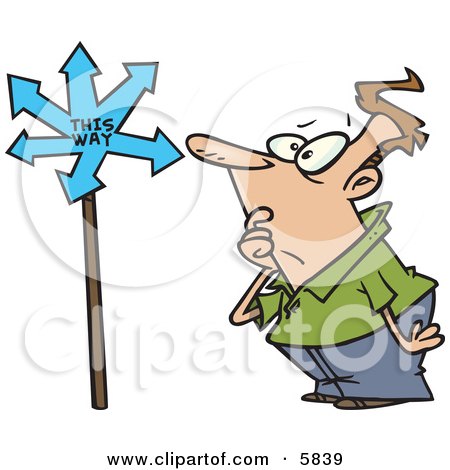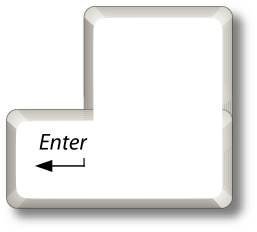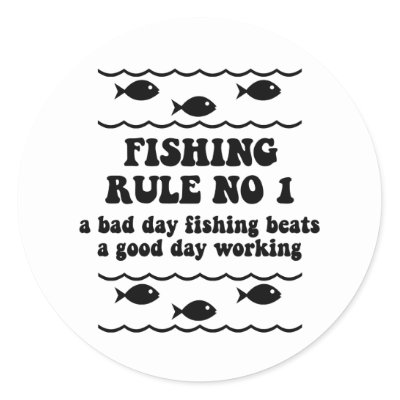
How NOT To Make Money: Trading Stock Options
13 Unlucky Reasons Not To Trade Stock Options
1. 90% of option traders lose money
2. Nobody knows anything about successful options trading strategies
3. Trading options was the one activity at which I could not improve
4. Option purchases are "limited-risk"... but the limit is 100%!
5. Options lose time value from the moment you purchase them
6. Trading costs are high
7. Options are short-term and expire. You must trade often.
8. You trade in a thin market with little liquidity
9. Brokerage and trading floor fraud and abuse
10. Option prices are not formally tied to the price of the stock
11. Technical analysis does not work
12. Trading strategies and rules only work in hindsight
13. Perfection is required, but something always goes wrong
I would not recommend options trading to anyone
When I was getting started in options, if someone had told me what I am about to tell you, I wouldn't have believed them. "I'm a smart guy," I would have thought, "a fast learner, and when I study something, I get good at it. That will put me in the 10% of traders that make money."
1985 was when my two year, 12 hour a day, 7 days a week adventure began. I read books, subscribed to options quote, charting, and valuation services, studied the Black-Scholes option valuation formula, wrote computer programs (of course!) to do calculations, and joined CompuServe's Investor's Forum where amateur and professional traders exchanged ideas and discussed strategies. I made theoretical trades on paper, and, when it seemed like I might be getting the hang of it, started trading for real.
My goal was to either "become good at options trading OR prove to my own satisfaction that it cannot be done". In the heat of the action, and increasingly determined to become good at it, I forgot about the second part of the goal.
The 2 year effort was a difficult intellectual failure and a stinging financial one. I not only failed to become good at options trading; I completely failed to improve at it. I'd learned the jargon, was practiced at the mechanics of placing orders for different types of trades, and was knowledgeable enough to be comfortable discussing issues with other traders, but in fact I had not acquired any skills that made it possible to make a profit.
It took an act of will to quit trading. I wanted the opportunity to try to make my money back, but thought, "How will I feel at this time next year if I have, instead, lost twice as much?" The thought was sickening.
So I quit. It was supposed to be for a year, long enough to leave behind any temptation to "get even", long enough to break free from the addictive allure of the adrenaline-charged trading existence, and long enough to regain some objectivity with which to reflect upon my experiences. But the objective reflection brought discoveries that made my trading halt permanent.
Putting it all together, I remembered the second half of my original goal, "OR prove to my own satisfaction that it cannot be done". Over time, I concluded that it cannot be done.
Not merely that I couldn't do it, but that no one can. The rest of this article summarizes the evidence that pointed toward that conclusion. It is a personal view of the options markets, not intended as an academic reference. Some of the information, from 1987, is dated, but in a brief online review of the "situation" today in the option markets, it didn't look like the most important aspects have changed. If you believe any statement is in error, your comments are welcome.
1) 90% of option traders lose money
Even people who are highly knowledgeable about the financial markets and work in the industry do poorly. There is evidence all over the place that losing money in options is normal and "everyone in the know knows it".
I never got good at options trading, but I never encountered anyone else who was good at it, either. Some people admitted that they lost money overall, while others, although they spoke readily of their wins, were evasive about losses and totals. This was less surprising when I discovered, to my disappointment, that many of the people who traded options were also gamblers. They most likely viewed their options adventures as just another exciting form of gambling.
I've seen respected stock market analysts admit that they had been unable to profit from options trades and recommend staying away from them. Motley Fool, which has been around for years, has a web page that warns about options. Justin Mamis, an experienced professional trader, in his book, How to BuyAmazon.com, says, "We've rarely had any success in the options market."
I once asked my broker, at a large brokerage house, if she knew of any clients of theirs who consistently made money in options. She said, "A couple. Very few. Being in the business, I can't resist taking a flyer myself sometimes, but I've never done very well, either."
I subscribed briefly to the Value Line Options service. Their issues sometimes contained editorial statements that were remarkably lukewarm about their own service. They did not write enthusiastically or optimistically about options and seemed to doubt that their service would help anyone make money. My inference was that they published the service only because they saw a market demand for the statistics and could profit by providing them. I also subscribed to their Value Line Investment Survey, a fundamental analysis service on stocks. They never expressed similar reservations about their stock service, with, in my opinion, good reason.
The brokerage firms that I'm familiar with require that an account be specially approved for options trading. They require a minimum balance, and, to make sure you understand the risk of loss, they send you a risk disclosure document that is available as the Options Disclosure Document at http://www.optionsclearing.com/. If brokerage firms believed options to be a viable route to profits, why would they impose these requirements before allowing you to start trading?
Most people who continue trading options lose ALL the money they allocated, if they were smart enough to allocate an amount.
2) Nobody knows anything about successful options trading strategies
If you really found a winning strategy for trading stock options, would you publish a newsletter about it? Would you do television interviews? Would you create a website to tell everyone about it? No. You would sit at your desk all day trading options and not stop until you'd made however much money you wanted to.
There is an entire industry dedicated to promoting the notion that you can become a good trader, but the people in that multi-billion dollar industry are not doing that for themselves. Why not? Because they can't.
Investment newsletter writers, book authors, market analysts, TV show hosts, brokers, websites, and others make their money by perpetuating the myth that you can consistently beat the markets if only you learn enough. If any of these people knew how to make money in the markets, they'd be making their money that way. The very fact that they choose to do anything other than invest for themselves is proof positive that they haven't got anything worth listening to.
There are many areas of life where asking someone, "If you're so smart, why aren't you rich?" is not fair because success in that area may have nothing to do with making money. However, in the financial markets, the entire goal of which is to make money, this is the most fair and reasonable question that it is possible to ask. "If you're so smart, why aren't you rich?"
Every time you read a newsletter, every time you see a TV show, every time you visit a website telling you the latest great way to make money in the options market, ask them in your mind:
* "If this works so great, why aren't you doing it?"
* "If this works so great, why do you make your money writing this newsletter?"
* "If this works so great, why are you in this awful late night infomercial?"
* "If you're such a great trader, why do you manage other people's money but make your money from management fees?"
3) Trading options was the one activity at which I could not improve by studying or practicing
If I study hard and work at something, I get better at it. Two years of effort and study did not improve my results at trading options. When study and practice bring no payoff at all, it is a red flag indicator that the activity might be one at which it is not possible to improve. The possibility must at least be seriously considered.
4) Option purchases are a "limited-risk" speculation... but the limit is 100%!
The same is true of stocks, but you will almost never lose 100% on a stock.
The "limited risk" feature of options only distinguishes them from futures contracts, where you can lose much more than you invest.
Your loss in an option is limited to 100%, but you can lose 100% over and over again. To offset those losses, your gains, when they occur, must be very large. They can be, but they rarely are.
5) Options lose time value from the moment you purchase them
Your stock must not only move (assuming the option follows the stock, which it doesn't always do), but must move in time for your option to overcome its time-value loss since you bought it.
6) Trading costs are high
The combination of poor executions, wide bid/ask spread, and commissions can make even a successful options trade less profitable than it ought to have been.
a) Bid/Ask spreads are wide
Even when the executions don't go bad, the bid/ask spread is usually wide, which has the equivalent effect of a bad execution. If you buy an option for $0.75 and sell it immediately, it is quite common that you might receive only $0.50 for it, a loss of 33% plus your both-way commissions. [2007 note: with decimalization, bid/ask spreads might be somewhat less wide now than they were in the 1980's.]
b) Poor executions are frequent in options
Options markets lack liquidity, and specialists sometimes seem to take questionable liberties with the pricing of "at market" orders, and in one particularly bad case, my order was simply overlooked:
I owned options on which there was a Good Till Canceled limit sell order. During one day, the option price spiked well above my sell limit, then plunged back to near zero, but never during that time was my sell executed. I obtained written proof of the price history during the day and presented it to my broker. They credited me with the sale at my limit price, but I suspected it was partly because I was an active trader and they wanted to keep a customer.
One can hope that better computerization of the markets (and better oversight of specialist activities) has made bad executions less frequent, but there remain some situations where if an execution goes bad or you are unable to get your trade executed due to factors on the trading floor, you are just out of luck. (See the OCC Options Disclosure Document.)
c) Commissions on option transactions are high
Your options must make a significant move in the right direction just to overcome your commission costs.
1987 brokerage commissions were about 3 times today's rates, so it was a more important factor then. Nonetheless, if you trade on paper to discover if you will be good at options trading, always calculate and include the actual commission costs that would be charged.
7) Options are short-term, and they expire
You are forced to trade often. You cannot simply buy and hold. If you want to stay in the market, you must replace expired options with new ones, incurring repeated commission expenses.
You cannot use a long term strategy to wait out setbacks. If a stock makes a big move against you, your chances of it recovering before expiration are small.
8) You usually trade in a thin market with little liquidity
Most options are traded so thinly that you are trading against the specialist because there is no one else available to take the other side of your trade.
The specialist has instant access to news about the underlying stock, firsthand knowledge from moment to moment about the supply and demand for the stock and the option, and is on the trading floor assimilating all this information, and is setting the prices that you pay and receive accordingly. Trading against someone in this position is risky.
9) Brokerage and trading floor fraud and abuse
There are (or used to be) few safeguards to protect an individual trader against fraud and abuse in the options trading system. It's a jungle out there, and you're not a very big animal. Regulatory oversight of the financial markets has never been very good. If you read the news, you know that all too well.
Consider this in light of Section 6b above: "Poor executions are frequent in options".
10) Option prices are not formally related to the price of the underlying stock
From the emphasis that is so often placed on formulas that supposedly calculate the "value" of an option, you would think that there must be a formal relationship between the price of a stock and the price of an option on it, but there is not.
Like everything else, the value of an option is whatever someone is willing to pay for it at a particular point in time. If it's hot, it's hot, if it's not, it's not, and an underlying stock and the options on it don't always fall into and out of favor at the same time. Option prices move independently of the price of the underlying stock, and sometimes track the stock surprisingly poorly.
An option valuation calculation might say that an option is undervalued or overvalued, but there is usually a reason. If a company is going into bankruptcy, are you really going to buy call options on the stock just because the Black-Scholes equation says they're undervalued? Of course not! They're undervalued for a good reason. The Black-Scholes equation deliberately omits factors such as this because they are not quantifiable. In this case, though, the bankruptcy is the most important piece of information to know about the company, so the Black-Scholes calculation is utterly worthless even as a guide.
Option prices reflect the expectations of options traders about what the stock is going to do. As soon as a "technical move" looks likely, the options will often move in anticipation of it, to the point that they would be worth after the move has already occurred. If the move doesn't happen, the options drop. If the move does happen, often the option has already made its move, and won't budge any further. If you wait for a signal, others (like the specialist or floor traders) will get there first. If you anticipate a signal, you're going on "nothing".
One of the peculiar ideas I once had was that the only time to buy an option was when it looked as though no signal at all was likely anytime soon. I never followed up on this with any study, but that would be the only time that an option had anywhere near its fair value: when almost no one has any interest in it one way or the other. On the downside, that makes your purchases basically random.
The real fair value of an option is probably its market value.
11) Technical analysis does not work
Many options traders use technical analysis to try to predict price movements, but if there were any value in the chart "patterns" of TA, they would by now be rigorously (operationally) defined so people could agree on the definitions, and there would be numerous studies showing that it works.
When an invention of this type enters the marketplace of ideas and shows legitimate promise, it gets examined by the academic community rapidly, thoroughly, and in detail. After all, these types of discoveries can win Nobel prizes and/or billions of dollars. Charting would not still be a "black art" at this late date if it had any validity.
Studying my Edwards and Magee "technical analysis bible" did not help my trading.
Fundamental analysis, on the other hand, might not be worthless in principle, but it's not much use in option trading because its outlook is long term, and the maximum life of an option is only 9 months.
So what type of analysis does help in option trading? Nothing helps.
But why do some people appear to succeed?
a) If 100 people predict a series of 100 coin tosses, a few of those people's guesses will happen to coincide better than others with the actual results, making them look like geniuses for a while. Whenever a person (or money fund) "excels" in this manner, they make a big deal about it, while noting in the fine print, "Past performance is no guarantee of future results." Nice understatement. Past performance is not even an indicator of future results, much less a guarantee.
b) "Success" depends on the time period chosen for reporting. The most informative time period (rarely reported) is "from the day you began trading right up until today", no omissions allowed.
12) Trading strategies are arbitrary, contradictory, and only work in retrospect
There are many trading rules such as "Cut your losses, but let your profits run", or "Sell after any 5% retreat", "Always use limit orders", etc. They all sound like good strategies, and they all are good strategies in one situation or another. Unfortunately, you don't know ahead of time which strategy will look good in hindsight, and they are all so vague and contradictory that they have no use except in hindsight. You might just as well complain, "Oh why didn't I buy low and sell high like I knew I should?" because most trading rules are of little more use than that one. They are fine for looking back, but they don't help going forward.
After a bad trade, you can always go back and see where you went wrong, discovering how some particular strategy would have saved you, but the same strategy that would have saved you this time would kill you another time, so what use is it?
13) In options, perfection is required, but something always goes wrong
You must correctly predict the stock's move and the time during which it will make that move. You must buy the option at the price your calculations are based on. Then you must sell at the right time, in the right way, having chosen the right method (stop-loss, limit order, or market order at time of sale), and your order must be executed rapidly and correctly by your broker and the options exchange. In too many option trades, some part of it goes wrong.
Conclusion
I am not saying that you cannot make a killing in options. You can. But it's extremely unlikely, and if it does happen, it's not because you are "good at it".
To some this will sound like a sour grapes story, but I know that there is a difference between an activity that I cannot become good at and one that no one can become good at.
Let's compare forms of gambling as a somewhat appropriate analogy. I do not like gambling, and if I thought that's all that options trading was, I never would have had any interest in it.
There are games like poker that require skill and that it is possible to become good at. Newcomers usually lose, but their results improve as they gain experience. I would be a bad poker player because I don't have the skills. However, experienced and consistently successful poker players do exist.
On the other hand, there are slot machines, state lotteries, and roulette. They require no skill, do not reward skill, and are mathematically impossible to become good at. I would be bad at those games not because I am unskilled, but because no one can be good at them. It's in the nature of the activity.
My conclusion about options is that because of the factors described above, I cannot become good at it, and neither can anyone else. It's in the nature of the activity.
I've heard options strategists say that the key is not to be in the market all the time, but to trade seldom, picking your positions carefully. It's true, this works to improve your results. If you only put a quarter in a slot machine once a year, it will limit your losses to $0.25 a year.
An activity that is inherently profitable should bring greater return the more you do it. If your results get better when you do it less, it is an indication that the average return is negative. If the average return is negative, you should never put the quarter in at all. Then you lose nothing.









































